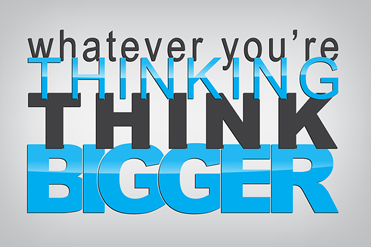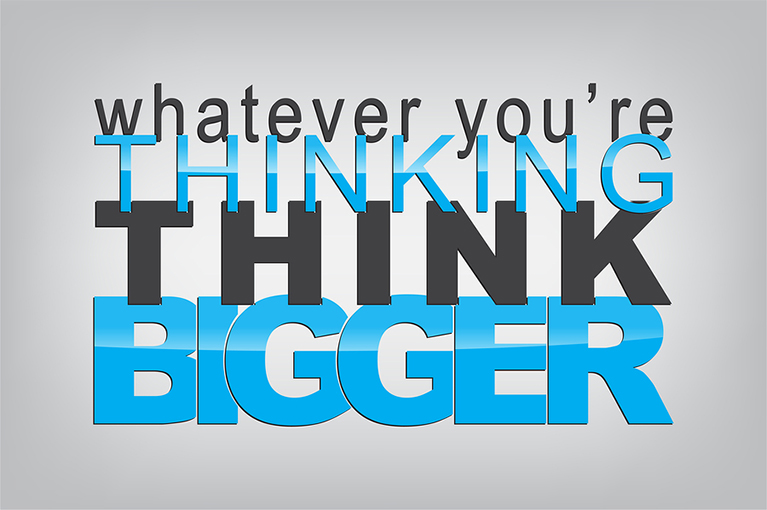

Websites are made to be scanned. The rate at which we digest information has become so fast that users glaze over if you introduce them to your product or service with more than a quick pitch. Obviously, great copy will motivate them through the sales funnel. But do you know the secret to getting them to stop long enough to read that copy?
Typography is key to usability on your site. Labeled by some as the foundation to great web design, it shapes the information that you’re trying to impart – literally. Broadly, it refers to the look and flow of information (text, mostly) on the web page. While this might seem like a somewhat minor detail for your designer to figure out, consider some of the huge benefits of using it successfully.
Content comprehension
Have you ever struggled to read text on a website? You have to strain your eyes to decipher the tiny, squished-together words? Or maybe the text was white, guaranteeing that no one would ever be able to understand it. It’s a frustrating experience, and will send most people to a competitor’s domain. Great design will capture people’s attention, but if you want them to stay on board for more than a few seconds, you need to use great typography.
Not only will it decrease your bounce rate, it’ll help your readability and legibility (two key terms when it comes to typography). Readability refers to how you influence the user’s comprehension of the content, while legibility has more to do with how the content looks, i.e., is it easy to read? When used well, good typography can be an even better tool for site navigation than flashy images.
Visual Impact
Your website should be a visual statement about your brand. Stunning images will help, but unless your site is all imagery, you should consider the role that text plays as well. While a user may not consciously notice the layout of the text, it’ll affect his overall impression of what he’s looking at.
Typography is a powerful tool for branding. Whether you’re using unique fonts and bold use of space to appeal to, say, a younger, tech-savvy audience, or sticking to basic, easy-to-follow copy layout for your B2B company, the expert use of text can communicate your branding in a powerful way.
(For more on the effective use of typography and web design, check out Our website solutions).
Piqued your interest? To maximize its effect, here are some common best practices for typography.
Font
Font traditionally refers to the type of text used, but here we’ll use the term to discuss a few related topics as well. Most experts recommend that web page text consist of sans-serif fonts because they’re generally easier to read on pixel-based screens. Arial is a common choice, but if you’re not sold, Verdana is good way to go since it was designed particularly for computer screens.
Spacing is another important tool in your typography arsenal. Are the lines of text too close together? Likewise, you should avoid extra long line lengths. Users may experience text fatigue if they have to track sentences across the full width of your page. Make sure the space between characters is proportional as well. This may not look like a problem for a one or two line paragraph, but the cumulative effect could result in what’s known as kerning, or a visually unappealing arrangement of characters.
Keep it scannable
Scannable text helps users to digest information, but it also keeps the eye moving from one section or page to the next. Use an easy-to-spot hierarchy of info among your copy. For example, headers should all look the same and be slightly bigger than the text that follows them, but not so big that it looks oddly proportioned.
Keep the spatial relationship of text consistent throughout the website, but don’t underestimate the use of white space, or any area without text. It’s an easy way to keep your user focused on the information. Think of a website that looked exceptionally clean. It probably used a decent amount of white space to keep the text in check. If you’re wondering how to create more of it, try augmenting your margins. You’ll quickly see the emphasis of the page shift to the copy.
When all else fails… use your intuition
It’s a good idea to check in on your typography every once in a while. Take off your designer hat and put on your user pants. The truth is most visitors to your site aren’t overly concerned with the talent that went into making it. They most likely have a need that needs to be met (if you meet it, then they might consider your awesome branding). So take a minute and look at the site not as a professional per se, but as an everyday customer who’s not necessarily concerned with the flawless implementation of margins, or wise use of sans serif. What’s your gut reaction? Easy to read?
Want to find out more about how typography and web design can help your business? See what SPINX can do for you.
The post Typography: The Secret to a Killer Website first appeared on Web Design & Digital Marketing Tips.
